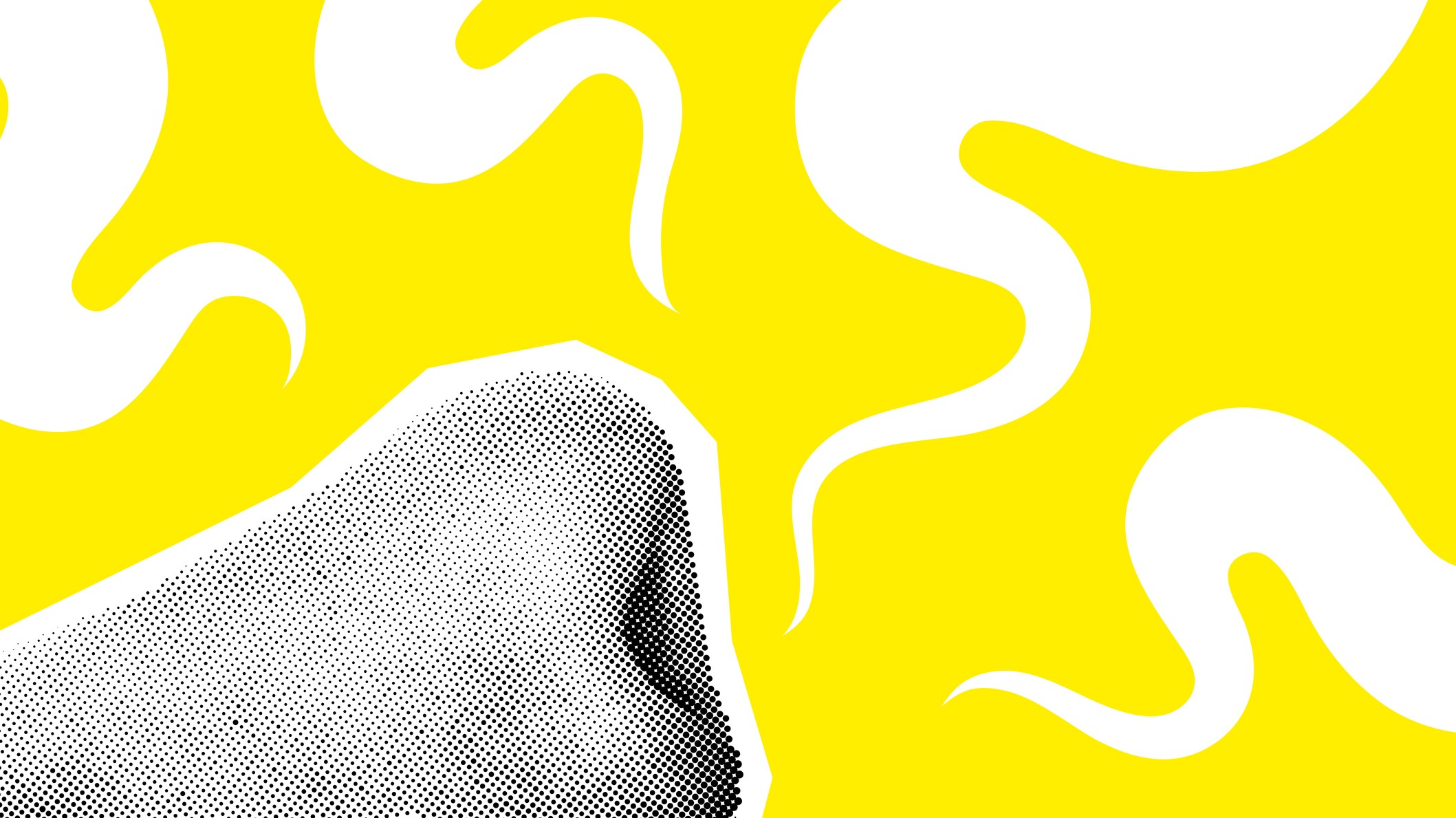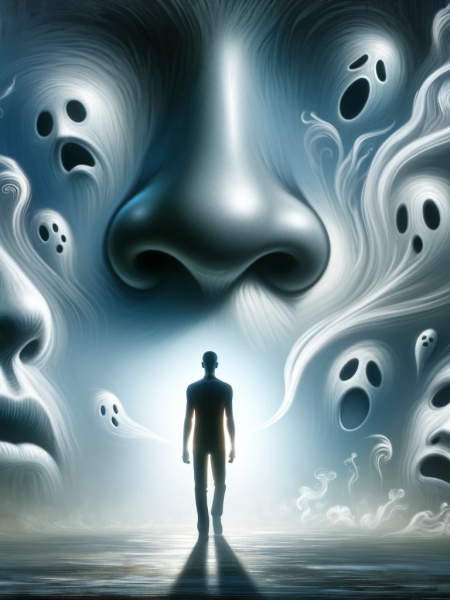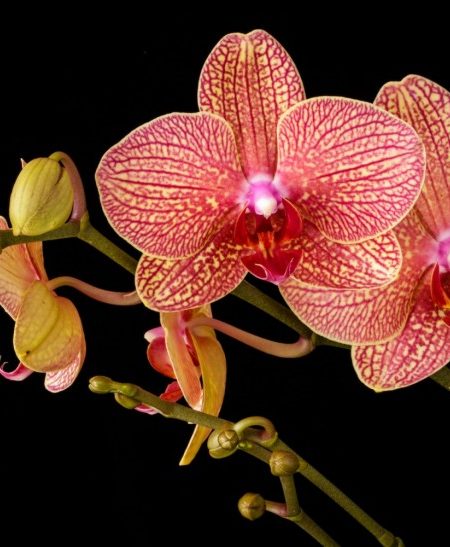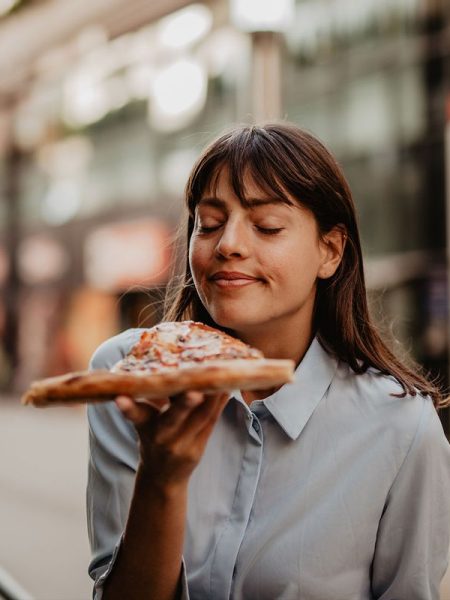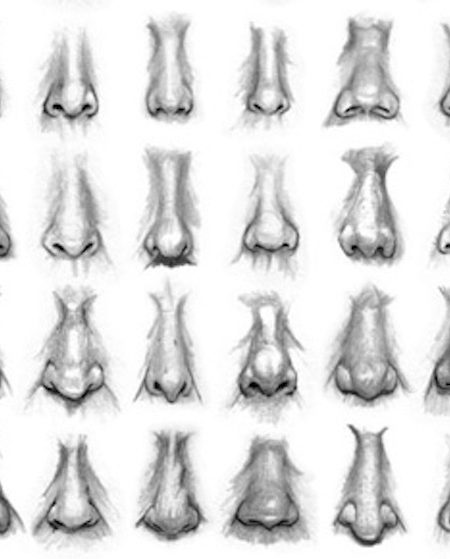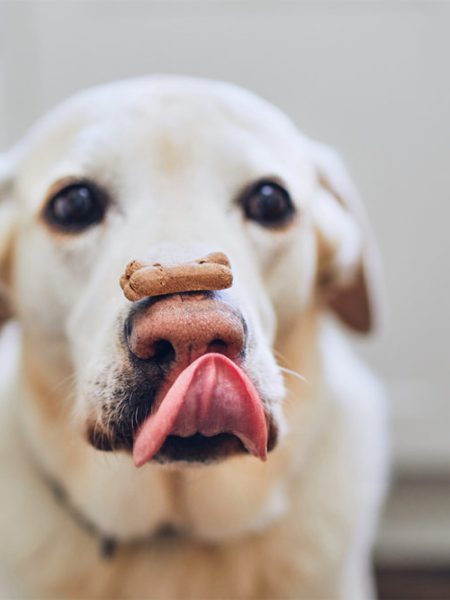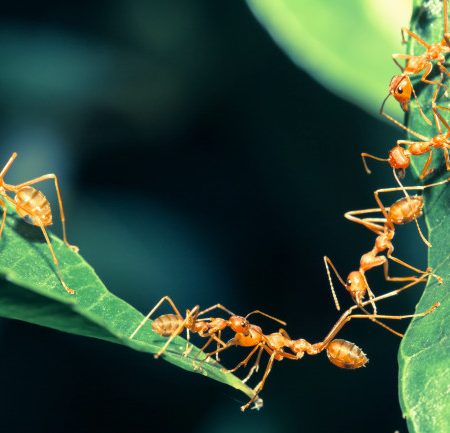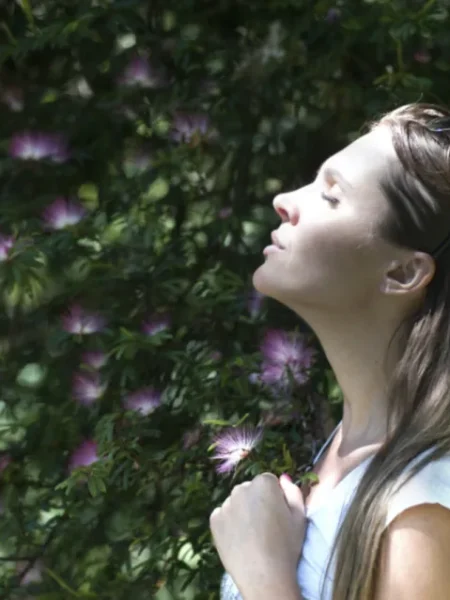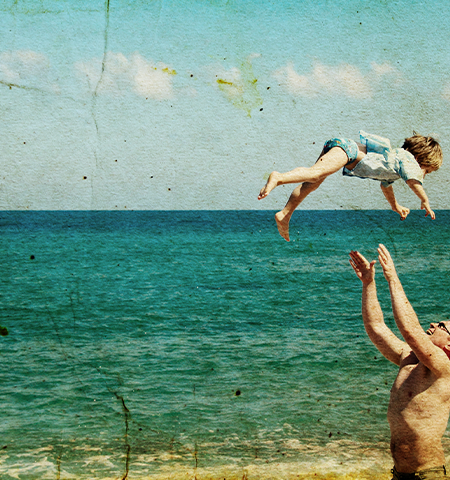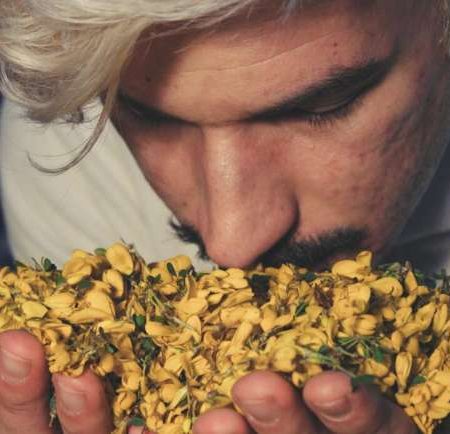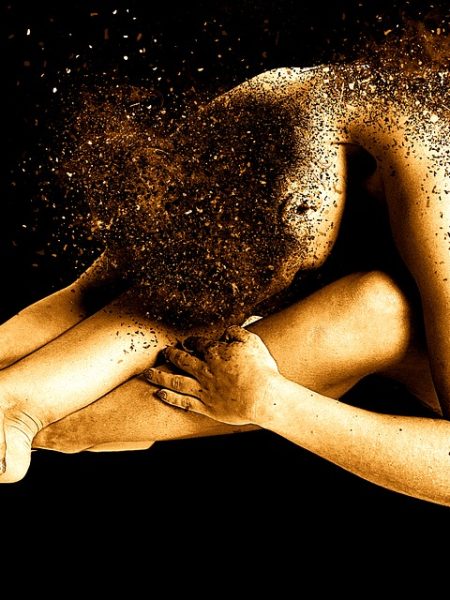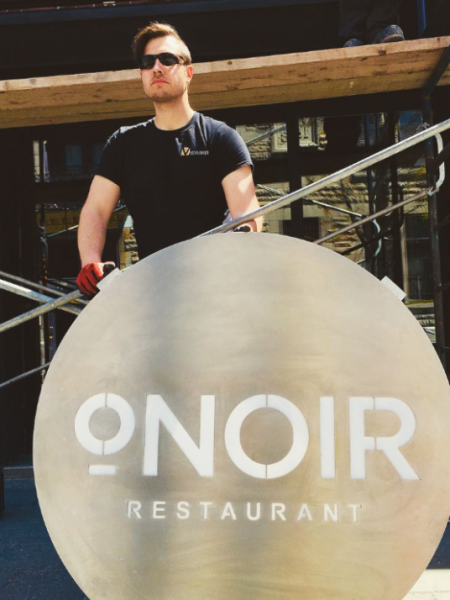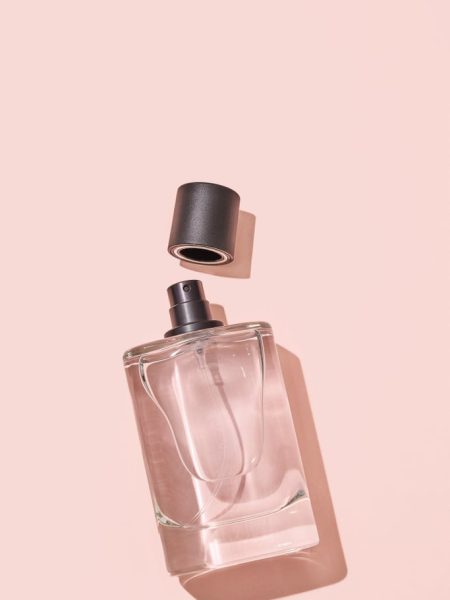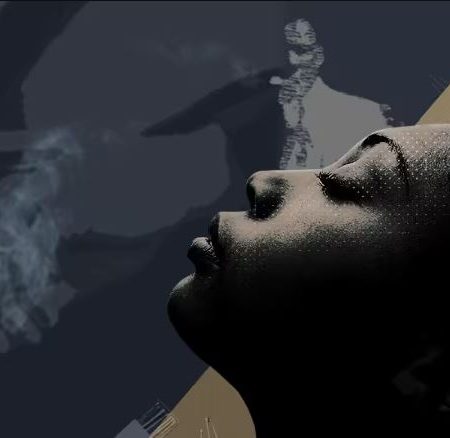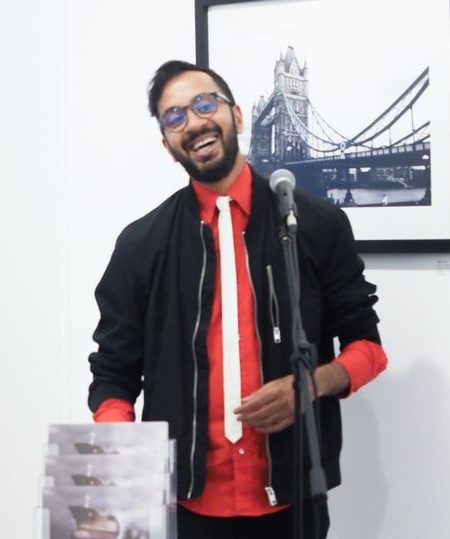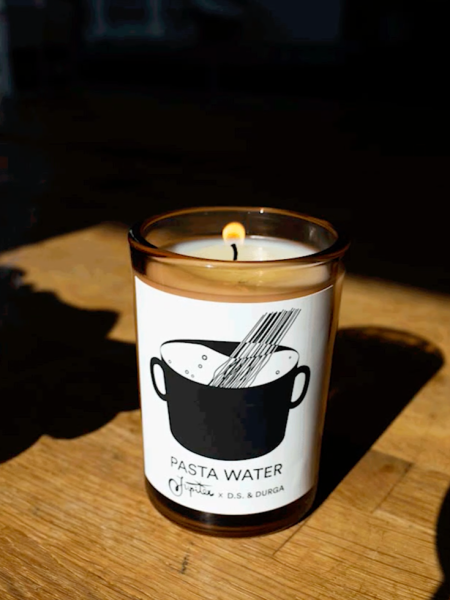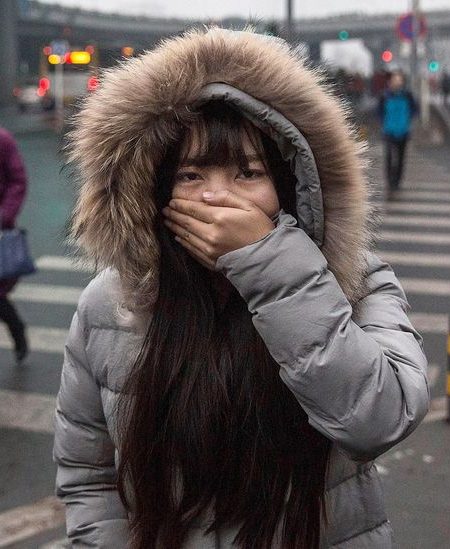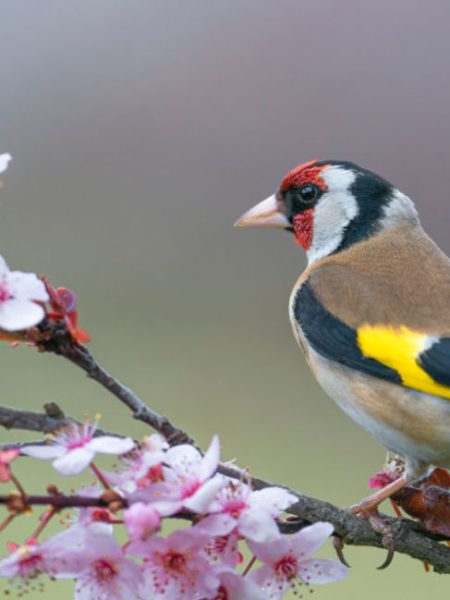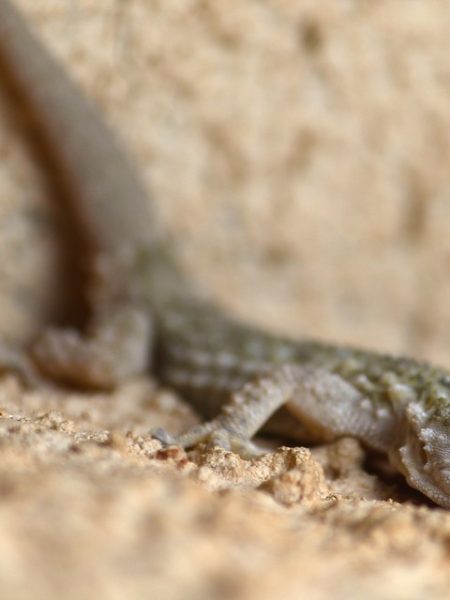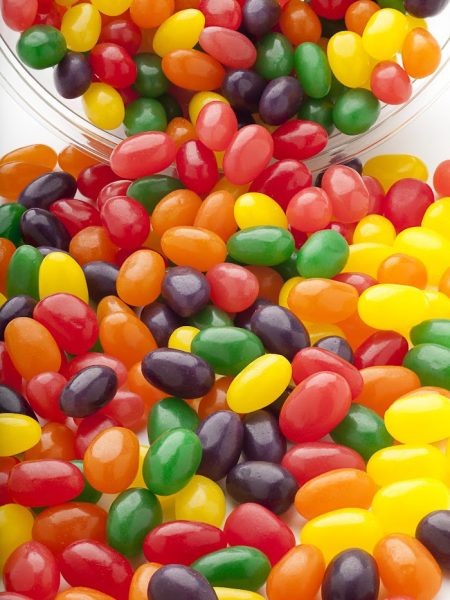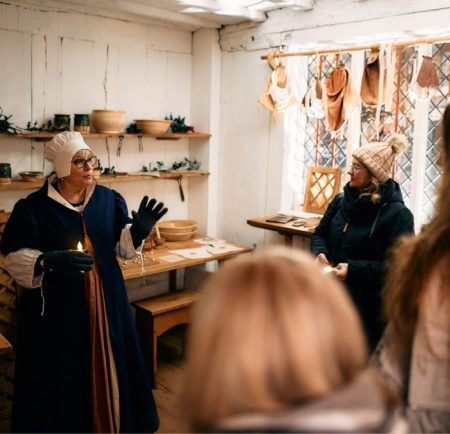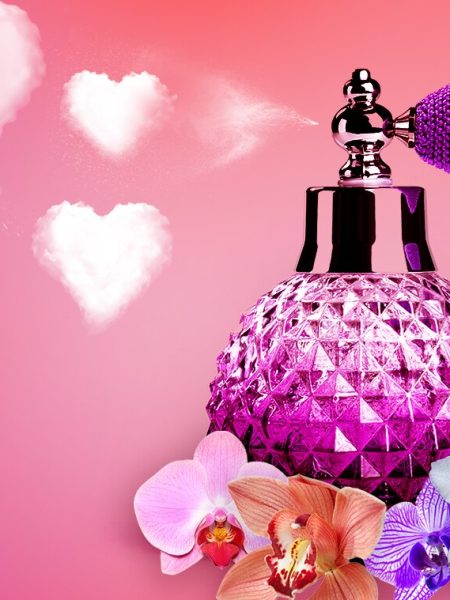At first, people were disarmed when Stephanie Weismann asked what they had smelled in Lublin, Poland between the World Wars, during the years of the Cold War, and in 1989, when the Iron Curtain fell.
“You’re not used to that, someone asking about your smell experiences,” said Weismann, a cultural scholar from the Department of Eastern European History at the University of Vienna.
To get people in a smelly state of mind, she would prompt them to imagine what smells they encountered from their apartment to school or work, re-living the routes in their heads—down the steps in a stairwell, riding on public transportation, walking along sidewalks and roads. Soon enough, her interview subjects had countless smell memories to offer, and also, the feelings that came along with them.
Using these smell recollections, as well as smells recorded in historical documents, Weismann is analyzing the “smellscape” of one Polish city—an approach called sensory history which interrogates the sensory experiences of the past to gain insight into political, cultural, and social life.
We usually examine the past with just one sense—vision. “We don’t listen to the past. We don’t consider the olfactory context of the past. We don’t think about taste. We rarely think about touch,” said Mark Smith, a professor of history at the University of South Carolina and author of Sensing the Past: Seeing, Hearing, Smelling, Tasting, and Touching in History.
Everyday senses like smell, hearing, taste, and touch are not universal and unchanging throughout the millennia, but morph in different historical, political, and cultural contexts. The way we perceive the world influences what we think, and vice versa. Sensory history is an attempt to understand human life as it was felt and experienced through the body—not just cognitively or through the mind or eyes. Understanding the history of the senses could provide key insights into the past, and the times when people were hearing, touching, smelling, and tasting things.
One reason why we place so much emphasis on seeing when it comes to “looking” at history comes from the overpowering influence of the Enlightenment, the scientific revolution, and the invention of the printing press. “All of these things catered to the eye, and denigrated the other senses,” Smith said.
Today, we often still don’t give the other senses their due. A survey from 2011 found that 53 percent of 7,000 16 to 30-year-olds from around the world would rather give up their sense of smell than their Facebook accounts.
In 1994, the late historian George Roeder Jr. analyzed 16 American history textbooks published in the previous 40 years, finding barely any sensory references, and concluded that history “is a nearly senseless profession.” In her book Urban Smellscapes, historian Victoria Henshaw wrote that smells are “ubiquitous, persistent” and have “unparalleled connection to memory,” but are often ignored. Is it because we don’t have access to these other senses? After all, how can we re-hear a quotidian sound that has already stopped reverberating, a smell that has already evaporated, or touch an ancient material that has been long lost?
But sensory history is not actually focused on re-creating sensory experiences for the modern person, said William Tullett, a lecturer in history at Ruskin University in Cambridge.
It’s true that we can’t record smells. But what we can do is uncover what smells meant to people, how they deployed them for good or evil, and how smells strengthened social groupings or political strife. Debates over fish odors, for example, along the Monterey coastline in California help to outline the tensions between tourism, real estate agents, and Chinese fishermen.
If you read a historical document closely, it’s very rare that you won’t find sensory evidence in between the lines. Sensory descriptions can be found in a variety of historical documents, like travelogues, newspapers, interviews, art, and even literature. James Joyce’s Ulysses is filled with descriptions of smells, yet only two scholars have made note of this sensory landmine, wrote literary studies professor Frances Devlin-Glass in The Conversation. (“A working database of smells in the book, compiled by Melbourne scriptwriters who were writing a play about Joyce and smell, runs to 41 pages,” she wrote.)
“It’s there,” Smith said. “It’s not really the texts that are problematic. It’s our reading of them.”
In the past two decades, history has started to finally undergo a sensory turn. There have now been a significant number of works that explore the senses in different time periods, like studies of taste during the medieval period in England, the history of the sound of bells in French villages, a history of smells in early North America, and a history of noise in Paris in the 19th century. “By paying closer attention to the smells that filled the air, historians can literally sniff out complex social [and] political conditions or conflicts,” wrote Bowdoin College historian Connie Chiang in her work on the smells along California’s coastline).
Smith also advocates for what he calls “intersensoriality,” or how the senses interact with each other. David Howes also refers to this as the “sensorium”; a period sensorium would be the unified sensory experience of a certain time period.
“History usually comes de-sensitized,” said Howes, a professor of anthropology at Concordia University and the co-director of the Center for Sensory Studies. “It’s a history of deeds. But it doesn’t pay attention to the senses by which we know of those deeds.”
To find records of historical smells, along with her interviews, Weismann combed through documents from the Public Health Department and Sanitary Commission, local newspapers and women’s magazines, and looked at Internet forums where people discussed cosmetics and their smells from the 20th century.
“It’s not only about the odors themselves, what the odors actually were,” Weismann said. “It’s about people’s perceptions of these smells and reaction and emotional attitudes towards certain smells.”
During the Cold War, Weismann found that Polish women’s magazines had ads for Polish scents, Soviet perfumes, and cosmetics from other European countries—showing “Poland’s conflicting position between local smell marks, Soviet exudations, and Western scents.”
While Poland was part of the Eastern Bloc, some people were skeptical about the Soviet Union, and this also was reflected in people’s opinions towards smells. Western European perfumes were considered most attractive and enticing, whereas perfumes from the Soviet Union were considered less cultured, and heavy. One interviewee referred to Russian scents as smelling of “insecticide.” On the other hand, Polish perfumes, like the brand “Pani Walewska,” were considered symbols of prosperity and a new era for Poland.
Weismann also analyzed recollections of smells of the inner-city yards of Lublin between the world wars, which smelled of kitchen waste, farm animals, or waste from trades like leather-making or slaughterhouses used to dominate the yards. The smells themselves did not change much, but during the 20th century, “suddenly these conditions literally got up peoples’ noses, and there was a veritable explosion of complaints, requests and inquiries, and an increase in denunciations,” Weismann told Scilog magazine.
Weismann said that the newspapers, in this interwar period, began to write about the need to “clean” up the city, modernize it, and remove the smells. The reaction to these smells reflected a desire to live in a modern —not rural—environment, devoid of provincial smells. At the same time, complaints about the smells of Jewish citizens intensified, and they were more open and bold—representing a growing prejudice, justified through the senses.
Now more than ever, AOD Marketing is your digital business partner. Whether you want to increase your online sales or ease your digital transition, our experts are there to guide and advise you and your team.
To conduct a history of the senses, like smell, this subjectivity is both fruitful and cause for pause. What kinds of smells did people focus on, write about, complain about, and why? What smells were present that are going unnoticed?
This includes the notion that the past was “smelly” and that modern times should and do smell better. While it’s true that a lack of indoor plumbing, agriculture, or hygiene habits would render the past a stinky place for the modern person, a person in the past wouldn’t smell their surroundings in the same way. Tullett said that “this deodorization narrative relies on a quite old idea that the past, and the cultures that are seen to be regressive, are somehow more smelly.”
This may tell us more about our desire to view history in the terms of progress and forward momentum than about how people in the past experienced their world. Historian Mark Jenner has written about how when we say the past smelled, it can be bound up with racist and colonial ideas that cultures that are less developed and less Western smell more.
Sometimes when objects or people are described as smelling badly, it’s not because they did, but because others wanted them to be, like the Polish descriptions of Jewish smells. Smell is very often used to divide classes or races from one another. This prejudice goes back all the way to Socrates, who thought that slaves smelled differently and that the use of perfumes threatened to confuse the ability to tell slaves apart from free men.
In the 1940s, Russians distanced themselves from capitalist Americans through smell. The Communist Soviets felt they were living in a fragrant world where “everything smells” and the Americans only experienced “bland sterile air.” In the movie Parasite, the rich Park family whispers about the smell of the Kim family. “By talking about different smells, the film puts the class issue under the microscope,” director and writer Bong Joon-ho said in an interview with Korea Times. “Through smells, the film’s tension and suspense mount, which eventually makes a multi-layered foundation for the upcoming tragedy.”
A sensory historian should not take descriptions of the senses at face value. “Perception is political; no sense is ideologically neutral,” Howes said.
Historical and cultural context is incredibly important—foreign documents need careful attention to what sensory words mean to its people, and what they meant at the time. In the past, there weren’t always five senses, the way that we think of them today. During the medieval period, there were six or seven senses. There was a sense called “common sense” or intuition, which was an amalgam of all the senses. In Old English, the word “smec” meant both smell and taste.
Even the same smell, perceived by the same sense, can elicit different reactions. In 2002, Rachel S. Herz wrote about how in the 1960s, people in the UK didn’t like the smell of “wintergreen,” or methyl salicylate, whereas Americans found it enjoyable. The wintergreen smellers in the UK associated the minty smell with medical products used during World War II, while in America, wintergreen was used to flavor something with a more positive connotation—candy.
While in Poland, some people regarded the smells of the East as harsh or low-brow, in Germany, the smells of the “East” could induce different sentiments. After the fall of the Berlin Wall in 1989, the two sides of Germany were unified. But Howes said there was an interesting sensory reaction among the people who had lived on the Eastern side, who were being exposed for the first time to Western commodities.
“Citizens of the former German Democratic Republic demanded old GDR products out of Ostalgie, or nostalgia for the old East, and as a reaction against the influx of flashy Western consumer goods,” Howes said. “For example, they positively preferred the Soviet-made Trabant [car], because of its rumble, its fumes, its look—not sleek—being relatively crude, and homey.”
“Just because they deployed [sensory] words doesn’t give them an objective weight of it being true,” Smith said. “It really tells you about the function of the smelling at a particular point in time and a particular place. We have to be extremely careful about interrogating the context in which the words were uttered and the descriptions that were offered, because they’re doing the work of ideology rather than doing the work of objectivity.”
Also, while cleaning up the smells of inner city yards symbolized modernization in Lublin, in Russia, the smell of cleaning supplies could bring up different feelings—and signal the expansion of communal spaces over private, that needed to be sanitized. Interviews done in 2011 found that among all of the smells people remembered from living in the USSR, the scent of chlorine was mentioned with the highest frequency. One interviewee remarked, “So long I’ve been waiting for this question. It is the odor of chlorine I hate most of all. It smells of impudence, hypocrisy, lie.”
People smelled chlorine in all sorts of places: kindergartens, hospitals, public bathrooms, entrance halls and staircases, train station, grocery stores, and restaurants. Memories of smelling chlorine in rural areas was rare—chlorine dominated the nose in urban spaces, communal and public spaces. “It is one of the intrusive, omnipresent odors shaping a collective sensory experience of ‘public’ space and/or political entity,” Weismann wrote.
One person interviewed said: “I remember a smell of public nutrition. It smells of an inescapably sour mixture of boiled cabbage and chlorine. It smells like some perfunctory institution, like a common place. In contrast to an odour of home (each household smells differently), common places smell alike: falseness, inhumanity, loneliness, toilets without doors and toilet paper, unappetizing food (which is being cooked not for this particular eater, but is processed in a giant tub), bent aluminium forks. Summing up, they smelled of humiliation.”
The senses can do a lot of heavy lifting when it comes to understanding these socio-cultural shifts, and the emotions that came with them. In a paper titled Sensuous (Re)Collections, anthropologist Gediminas Lankauskas wrote about Grūtas Park, a Lithuanian park–museum with Soviet-era memorabilia, including statues of former leaders like Vladimir Lenin.
“Seeing the Socialist past at Grūtas activates memories of trauma and loss,” Lankauskas wrote. Yet, at the canteen, where one can order “herring and onion rings ‘the Russian way,’ a beet soup called Nostalgija, meat patties called ‘Goodbye, Youth!’ (kotletai), a thick cranberry drink (kisielius) ‘Remembrance’ and ‘Vodka USSR’”—the full sensory experience helps us to access the more complicated emotions felt there. A history of people visiting this park that only accounts for what they saw, not what they smelled and tasted at lunch, would miss the complexity of a historical site like this.
“To behold the demoted statues and other discarded material artifacts is to recall the Soviet state, as well as the suffering and injustice it inflicted on its citizens,” Lankauskas wrote. “The dejected effigies and smaller objects displayed at the Park are mementos of that state’s demise. They activate memories of socialism as a system based on an untenable utopian ideology and simultaneously remind that that system is no more. To taste socialism, however, is to stir up more nostalgic memories of it.”
Incorporating other senses can provide a richer understanding even of historical events that are well-known, like the 1896 Supreme Court case of Plessy v. Ferguson that established racial segregation as legal in the United States, which was eventually overturned by Brown v. Board of Education decision in 1954.
Smith has studied how in the United States, white slave owners insisted that race was not simply a visual construct, but a sensory one—it’s how they stabilized the concept of race in their minds, and distinguished themselves from Black people. “You can’t fully explain the origins and the evolution of Southern segregation without understanding the history of the senses and racial stereotyping,” Smith said.
Vision alone could not justify the racial segregation the white people were trying to achieve, because of the fact that sometimes, a Black person could pass as a white person. In Louisiana in 1890, Black passengers were required to sit in different train cars than white ones, and Black people who could pass as white would resist this segregation. Homer Plessy, who was light-skinned, sat in a car designated for white people, and was detected only when Plessy himself told the conductor he was Black.
Plessy’s attorney used this situation as an example for why such a law forcing Black people to sit in different cars was unenforceable. But Louisiana’s prosecuting attorney, John H. Ferguson, said that “ It did not matter that the conductor couldn’t see Plessy’s race; instead, Ferguson insisted, he could smell Plessy’s racial identity,” as Smith wrote.
There is not an innate smell to any race, Smith noted, but it didn’t matter. Sensory stereotypes about Black people went beyond just smell. White people claimed that Black skin was thick and insensitive, or that they had poor taste, were noisy. If their senses were described in any positive ways, it was that they could hear noises from far away, or pick up on smells; likening their sensory skills and experience to that of animals. The perceived smell of Black people was used to rationalize the segregation between two “different” kinds of people, and Plessy’s “smell” made him Black, even when his looks did not.
During the COVID-19 pandemic, a historian could glean a lot not just from what we’ve seen this year but all the sensory experiences, or lack thereof, we’ve lived through. All of our senses have been dramatically impacted by COVID-19.
“Sensory shifts and perceptions tended to happen very slowly, measured in decades and centuries, not in mere weeks and months,” Smith recently wrote in The Conversation. “The shift that is happening now is unprecedented.”
In less than a year, vision has betrayed us as we face a threat we cannot see with our eyes. Instead of hearing, seeing, or smelling the bustle of cities and restaurants or the clamor of a school yard playground, we experience emptier streets, with new smells, sounds and sights taking over.
Perhaps a new negative memory of the smell of bleach or hand sanitizer will enter the collective consciousness as cleaning and hygiene habits intensify. We’ve heard of clapping for healthcare workers, the shouts of Black Lives Matter protests, and smelled the smoke from the wildfires—all part and parcel of what it is like to be alive right now.
Others might remember this time through the experience of a lack of touch. “Centuries of handshaking habits have evaporated; high fives are gone,” Smith wrote. “Outside of families, hugs, kisses and nuzzles have all been lost with the fear of infection.”
To help someone truly understand what it’s been like to exist in 2020, it would be necessary to consider all of the sensory experiences and how encompassing they have been.
“With the topic of senses, you can get so close to everyday life,” Weismann said. With her interviews, she said it started out simple. “You start with the garbage bin, public toilet, or the cooking smells of your apartment block. But at the same time, because smells are so closely related to emotional reactions, people would tell me of their personal attitudes and relationships to these smells and to the situations they were confronted with the smells.”
Recent smell-related articles

The Connection Between Saliva And Flavour Perception? | Slurp
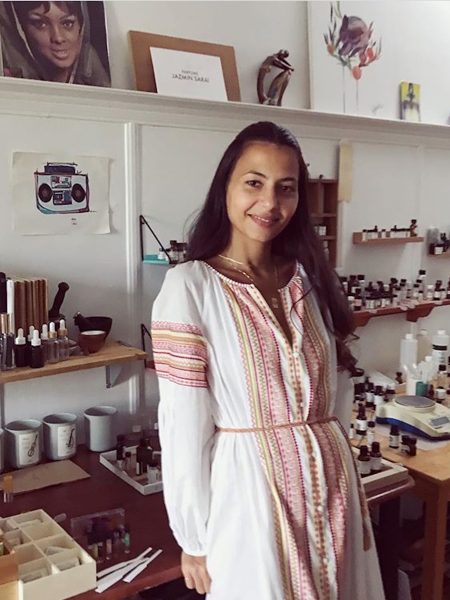
Scent adds more dimension to exhibits and stories & enhance perception and interaction | Denver Art Museum
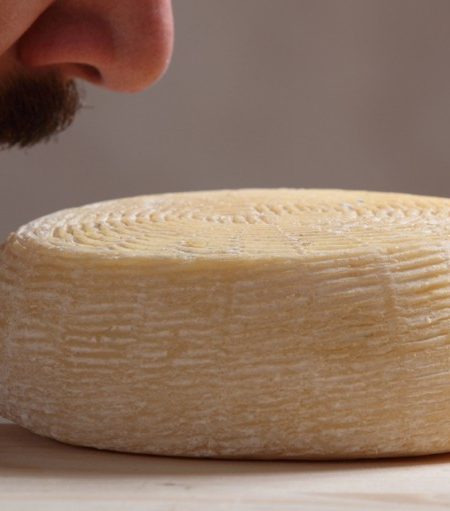
How do we smell? First 3D structure of human odour receptor offers clues | Nature
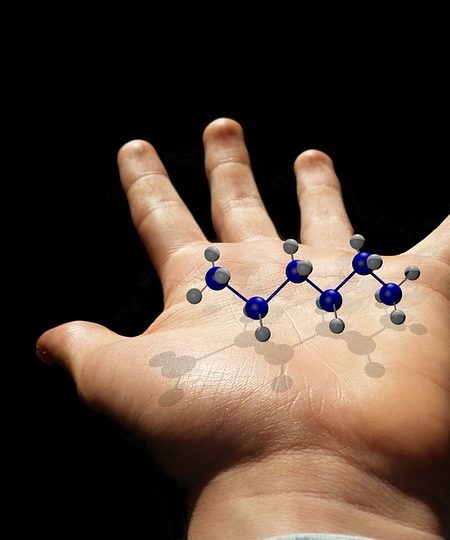
Breakthrough on ‘sense of smell’; scientists create 3D picture of odour molecule | Hindustan Times
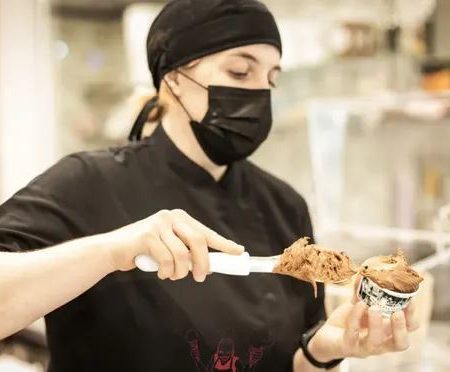
Tasting memories: the Spanish ice-creams serving a scoop of nostalgia | The Guardian
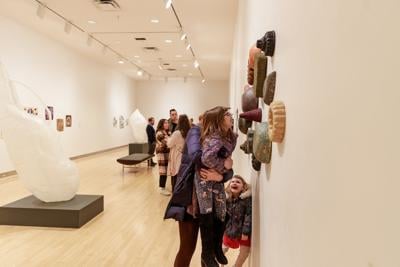
Art made from mushroom foam, walnut ink and more featured in Sustainable Studios exhibit | lancasteronline.com


